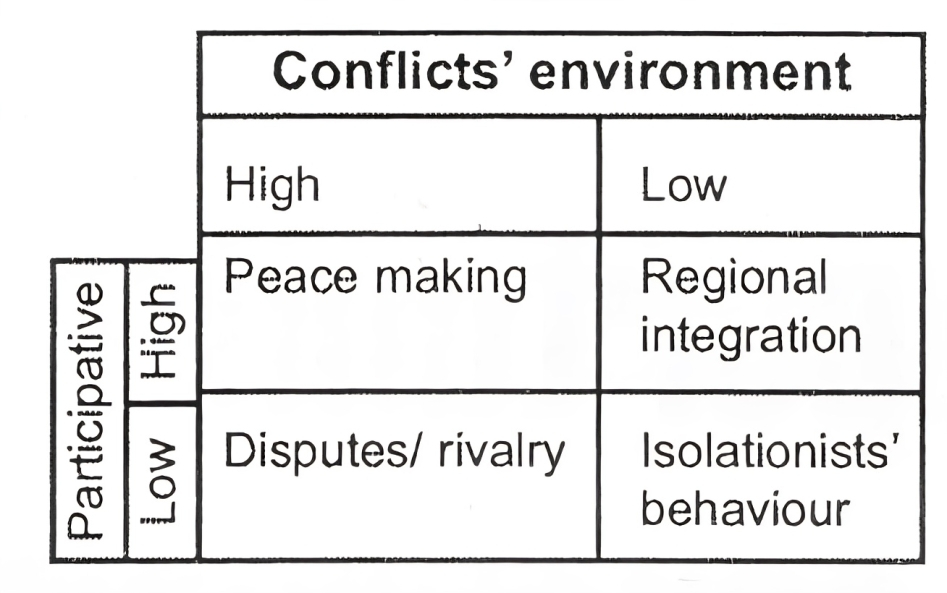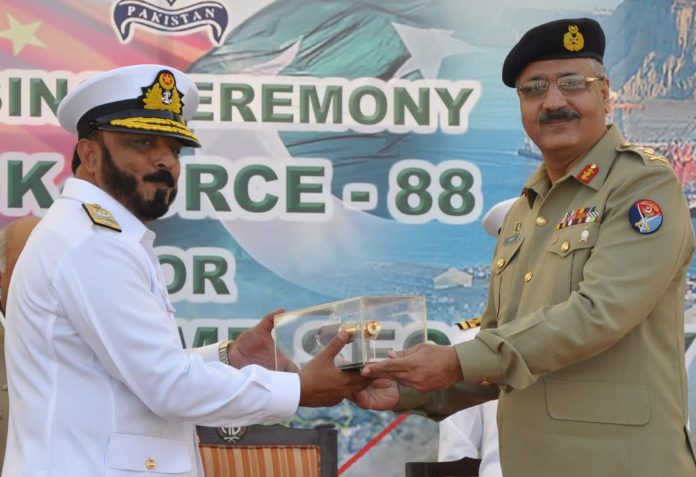“The CPEC project enjoys a unique geostrategic location, standing at the cross roads of three major engines of growth, including South Asia, China and Central Asia. It will change the fate of three billion people in the region. It will also serve as the hub of a major trade zone.”
Muhammad Nawaz Sharif Pakistan’s Prime Minister
Australia’s Sea Power Centre believes that ‘the 21st century will be a maritime century’, meaning that much will happen at sea rather than land. Carefully studying the rise of the British Empire, Alfred Mahan, in his seminal work Influence of Sea Power upon History 1660-1783 argues that prosperity of nations in great measure directly depends on their ability to use seas for their interests. Mahan opines that the rise of British colonialism was due to Britain’s unhindered access to the sea and its capacity for a sustained control of overseas territories and resources. China is finding itself the same access but with essentially a different disposition to what the British had. Britain did not carry anyone along, they subdued the contemporary maritime nations and fought a great deal to maintain their mastery of the seas. China, on the other hand, pursues the ideal of ‘win-win’ i.e. working its way through a mutually benefiting framework. Renewing the spirit of centuries old silk route, the Chinese have discovered a land-based belt and an ocean-going maritime silk road. The belt and road form the broader initiative of Xi Jinping’s One Belt One Road, which actually is a system of corridors passing through much of Asia and Europe. One of these corridors is the China-Pakistan Economic Corridor or CPEC.
CPEC brings with it a number of projects, e.g. setting up of industrial parks, construction of two major roads, installation of power generation plants, transformation of Gwadar as a trans-shipment hub, etc. Economic benefits are going to be multiplied in the years to come as China would be forced to move its lower grade, less advantageous industry out to Pakistan. Gwadar would provide a natural way out of Chinese products to Africa, Middle East and Europe. As the Chinese economy rises, it would be inclined to outsource much of small industries to other parts of Asia as well owing to cheap labour and low material cost. And once these regions (having Chinese industrial parks) are connected through a belt or a road, then the concept of integration would look more real.
The sailing of MV Cosco and MV Al Hussain from Gwadar Port on 21 November 2016 has been termed as “a watershed event in China-Pakistan ties” by PM Nawaz Sharif. This marks the beginning of the ‘new continuum of prosperity’ i.e. all-inclusive socio-economic uplift predicated on connectivity, industrialization and integration. This may well be called the ‘era of distributed wellbeing’. The interest of Central Asian states is increasing in CPEC and access to Gwadar, which means rail and road infrastructure to connect these countries will result in greater connectivity. Roads linking Gwadar with Kashghar run across the length of Pakistan, which clearly indicates enhanced connectivity between the remotest and hitherto inaccessible places within Pakistan. Setting up of industrial zones all along the road networks and their final dependence on Gwadar port will ensure a national integration as many parts of Pakistan will have a common interest and stake in the project, i.e. CPEC must remain functional. The steady inclination of Iran and Afghanistan in CPEC would mean a regional integration through gluing their economic interests to Gwadar port and industrial zones, which might spread to these countries on a long term basis. A matrix with different situations is shown below, here it’s computed between the player’s willingness to be part of the strategic continuum of prosperity and prevailing conflicts in the region:

The above construct shows that with a greater participative willingness, even in the high density of conflicts (or for that matter enduring conflicts) environment, the path to peace making can be traversed, which will finally lead towards regional integration. Gwadar provides an opportunity for the regional countries to come together with a common purpose – i.e. extract the benefits from this continuum of prosperity while setting aside the bilateral bickering.
Despite obvious signs of ‘distributed wellbeing’, there are counter-arguments surfacing that seek to cast shadows over the entire development. Some of these are: Pakistan would be a victim to ‘new East India Company’, Pakistan could become a ‘pliant state’, Pakistan will be subject to ‘Chinese nod’ on key strategic decisions, etc. These are discussion points of those who often excel at the ‘flipside narratives’ or the ‘conspiracy theories’. These points might appear fine when one looks at the big picture holistically as not to leave any ‘for’ or ‘against’ aspect, however, this does not in any way mean reducing the probability of prosperity to a hypothetically unattractive lower value. There are others who believe that a common man in Gwadar might never reap the fruit of ‘continuum of prosperity’, which could only be visible at the national level. Development of Gwadar port, since the start of the project in early 2000s, has created a lot of jobs for local Balochis in the labour category. Finding employment in higher level engineering or managerial positions, Balochis will have to get higher education in these disciplines, as private companies look for qualification, merit and suitability regardless of individual’s locale. This will positively impact the education system of Balochistan, where every effort will be made to improve the quality of its education system to ensure that local professionals stay in line in the competitive environment.
Gwadar port with all its taxonomy of ‘cornerstone of geostrategy’ and ‘fulcrum of geoeconomy’ needs to embark upon its operations quietly and effectively. Sloganeering and prevalent grandiose must be toned down to ensure its functions, operations and trade sustainment to continue. Government, elite and the common people must synchronously act to make CPEC and Gwadar port working as a regional new normal.




